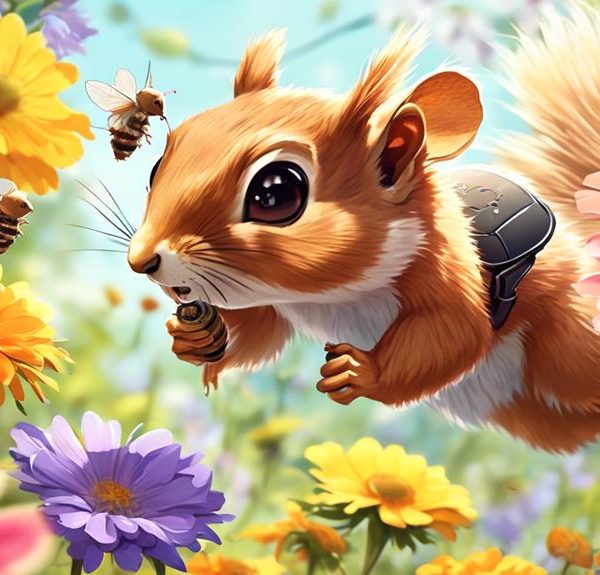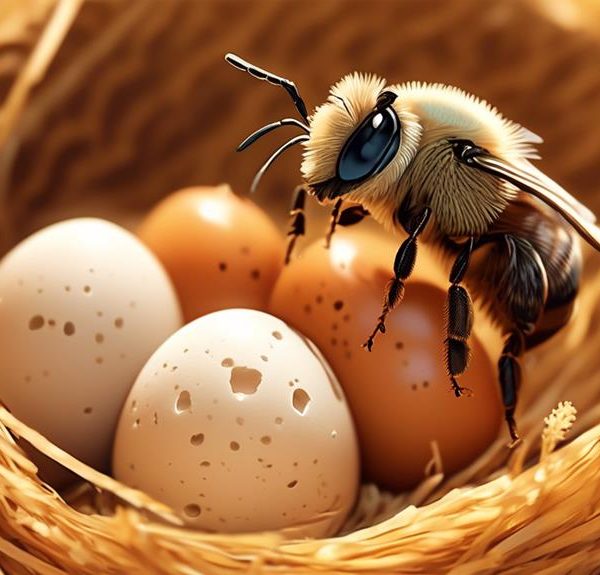Surprisingly small yet mighty, discover how the mason bee's minuscule size impacts its behavior and role in our ecosystem.
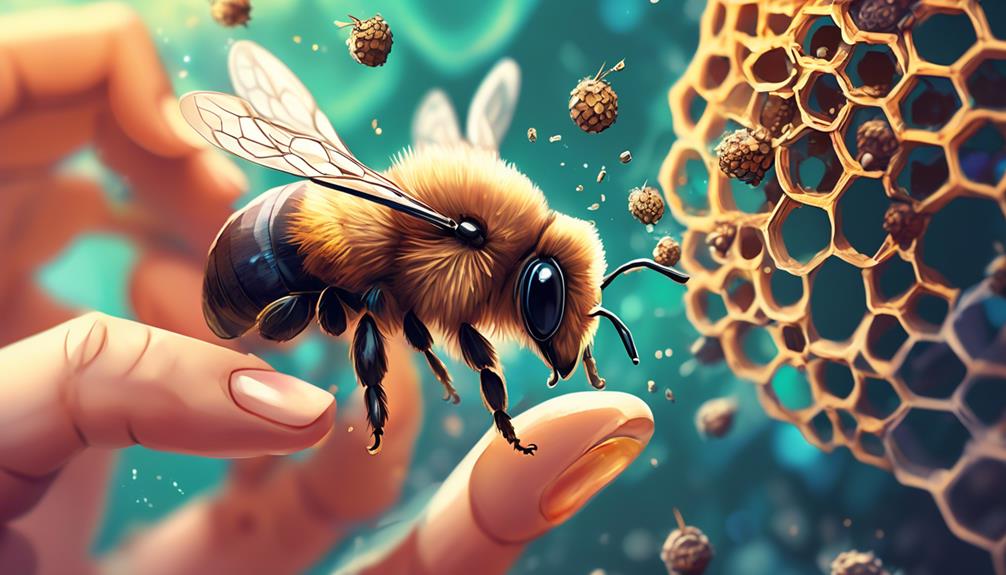
How Big Are Mason Bees?
Imagine you're holding a dime in your hand. Its small, circular shape is comparable to the size of an adult mason bee, which typically measures between 6 to 8 millimeters in length.
Taking their size into account, it's surprising to learn these little creatures are key players in our ecosystem, pollinating plants more efficiently than their bigger, buzzier cousins – the honeybees.
But what could possibly account for this size variation among bee species? And more importantly, how does this size difference affect their behavior and role within our environment?
Well, you're about to find out.
Key Takeaways
- Mason bees are smaller than honeybees, measuring between 6 to 8 millimeters in length.
- Mason bees are more efficient pollinators than butterflies and honeybees, visiting more flowers and spreading more pollen.
- Environmental conditions and diet during the larval stage affect the size of Mason bees.
- There is significant size variation among the over 200 species of Mason bees, with some measuring as small as 8-10mm and others growing up to 14mm.
Understanding Mason Bee Size

You'll find that the size of a Mason bee, typically ranging from 0.3 to 0.4 inches in length, is remarkably smaller than that of the common honeybee. Don't let their size fool you, though. Despite their petite stature, these bees play a vital role in the ecosystem, particularly in pollination.
You may wonder, why does the Mason bee's size matter? Well, it's crucial in understanding their unique survival strategy. Their small size allows them to fit into tiny crevices and holes for nesting, a characteristic that separates them from other bee species. You'll often find them occupying abandoned beetle holes or hollow stems.
Their size also impacts their feeding habits. Mason bees can't carry as much pollen as larger bees, so they've to make more trips between flowers. This constant to-and-fro contributes significantly to cross-pollination, making them highly efficient pollinators.
Comparing Mason Bees to Other Insects
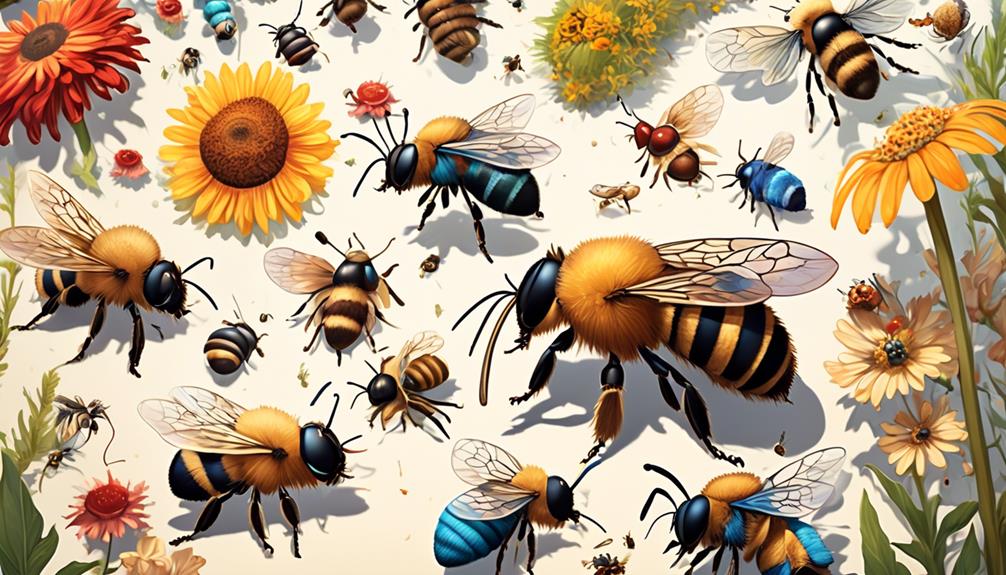
When comparing Mason bees to other insects, it's important to note their distinct characteristics and behaviors that set them apart in the insect world. These solitary bees are known for their hardworking nature and efficient pollination skills, unlike many other insects.
Consider for instance the common Honeybee. While both Mason bees and Honeybees are vital pollinators, the Mason bee's solitary lifestyle results in individual females doing their own foraging and nest building. This makes them more efficient pollinators as they visit more flowers, spreading more pollen.
Let's compare them in a table:
Aspect | Mason Bees | Honeybees |
|---|---|---|
Social Structure | Solitary | Colony-based |
Pollination Efficiency | High | Lower |
Aggressiveness | Non-aggressive | Can be aggressive |
Another insect to consider is the Butterfly, a casual pollinator. While they add beauty to the garden, their pollination efficiency is much lower than that of Mason bees. Butterflies do not actively collect pollen and therefore are not as effective in pollination.
Factors Influencing Mason Bee Size
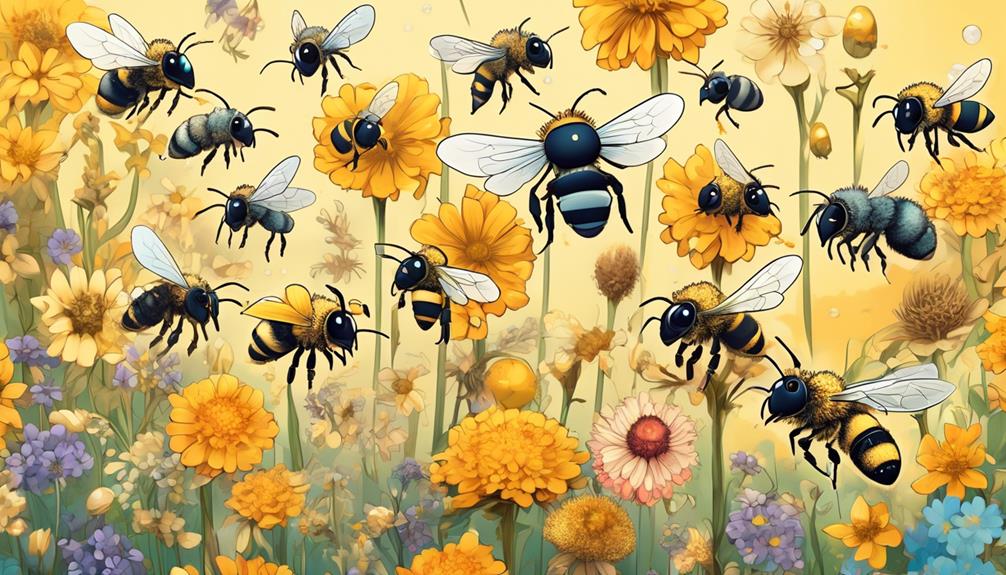
Diving into the realm of Mason bee sizes, it's important to note that several factors, including environmental conditions, diet, and species type, play a significant role in determining their size.
Environmental conditions, such as temperature and availability of food sources, are key. For instance, in colder climates, Mason bees tend to be smaller due to less abundant food resources. Conversely, in warmer climates where food is plentiful, they often grow larger.
Diet has a direct influence on their size. Specifically, the quality and quantity of pollen and nectar they consume during their larval stage greatly affect their growth. A rich diet can lead to larger bees, while a scarce or poor-quality diet may result in smaller bees.
Lastly, the species type is a vital factor. There are over 200 species of Mason bees, and their size can range drastically. Some species are naturally smaller or larger than others, regardless of environment or diet.
Understanding these factors can help you appreciate why Mason bees vary in size and it can also aid in their conservation. Remember, their size doesn't just affect their physical appearance, but their role in pollination and the ecosystem as well.
Size Variation Among Mason Bee Species
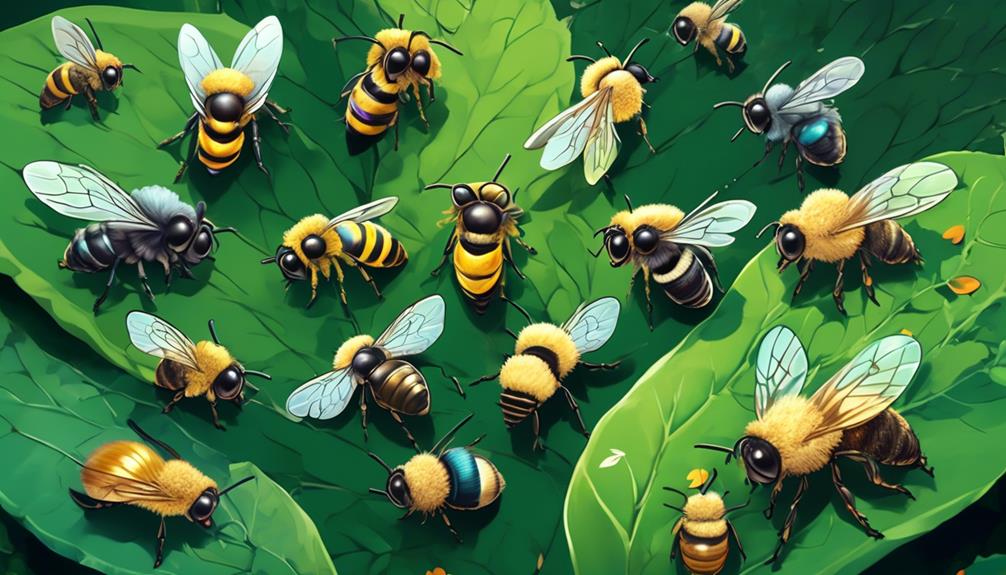
Among the vast array of over 200 Mason bee species, there's a significant variation in size to be observed, largely dictated by their specific genetic makeup. This diversity in size is particularly fascinating because it demonstrates the adaptability and evolution of these industrious insects in response to their environments.
You might come across the smaller Osmia lignaria, commonly known as the Blue Orchard Bee, which measures only 8-10mm. On the other end of the size spectrum, you'll find the Osmia bicornis or Red Mason Bee. These robust pollinators can grow up to 14mm long.
In between these extremes, there's a whole host of species that exhibit a range of sizes, each with their unique characteristics and roles within their ecosystems. It's also important to note that within a single species, male Mason bees are typically smaller than their female counterparts, a phenomenon known as sexual dimorphism.
Understanding this size variation among Mason bee species isn't just about appreciating their physical diversity. It's also about recognizing the biological and ecological aspects that have shaped these sizes, and the implications these have for their survival and pollination capabilities.
Impact of Size on Mason Bee Behavior
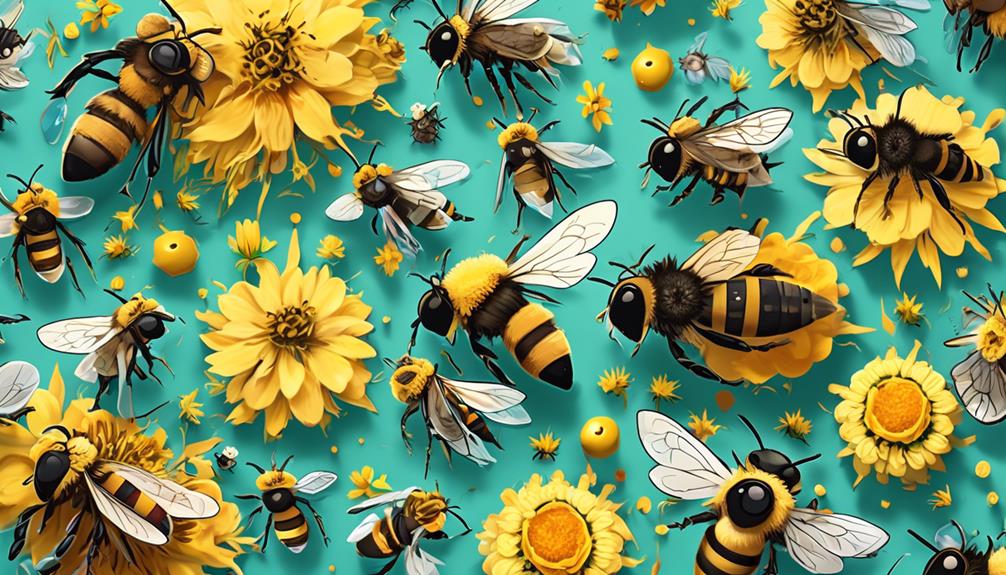
Building on the understanding of size variation among Mason bee species, it's crucial to consider how these size differences influence their behavior and interactions within their ecosystem.
Size plays a pivotal role in determining a Mason bee's ability to gather food, mate, and compete for resources. Larger bees generally have wider foraging ranges, enabling them to gather more diverse and plentiful food resources. Conversely, smaller bees can access narrower spaces, securing resources larger bees can't reach.
Mating is also influenced by size. Larger males often dominate mating opportunities, while smaller males may adopt sneakier strategies.
Competition between bees for nesting sites can be intense. Larger bees may outmuscle smaller ones for prime locations. However, smaller bees' ability to fit into slim cavities can give them an edge.
To help you visualize, here's a table summarizing the impact of size:
Bee Size | Advantage | Disadvantage |
|---|---|---|
Larger | Wider foraging range, dominance in mating | Restricted access to narrow spaces |
Smaller | Can access narrow spaces, sneakier mating strategies | May lose in competition for nesting sites |
Conclusion
So, you've learned that mason bees vary in size, typically measuring between 5 to 15 mm, depending on factors like species and environmental conditions. They're smaller than honeybees but larger compared to other solitary bees.
Their size influences their behavior, affecting their pollination patterns and nest-building habits. Understanding and appreciating their size can help us better support these vital pollinators in our ecosystems.
Keep exploring, and continue to discover the fascinating world of mason bees!

